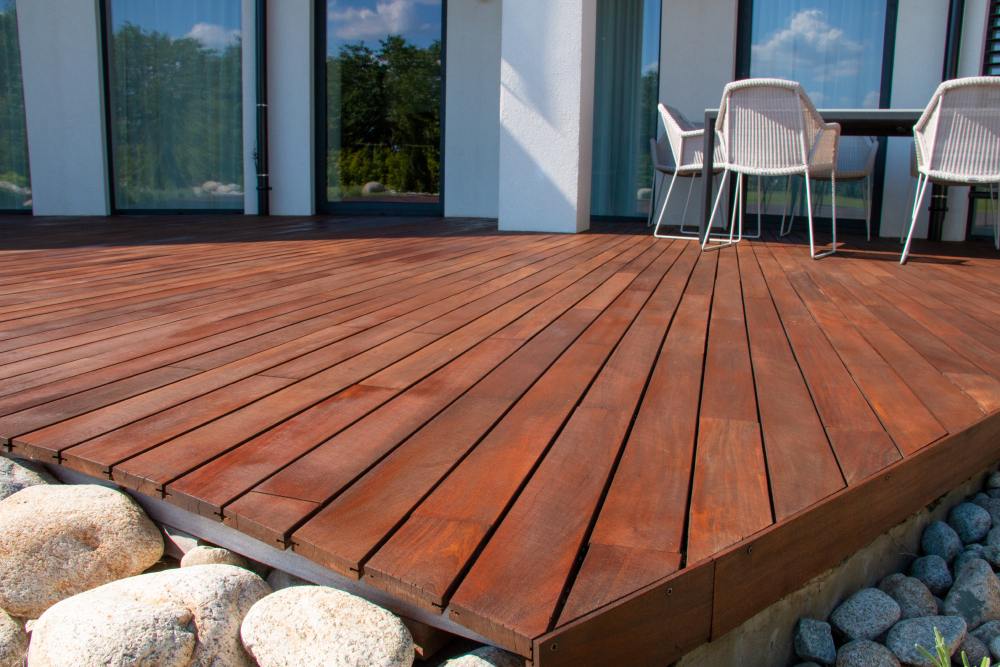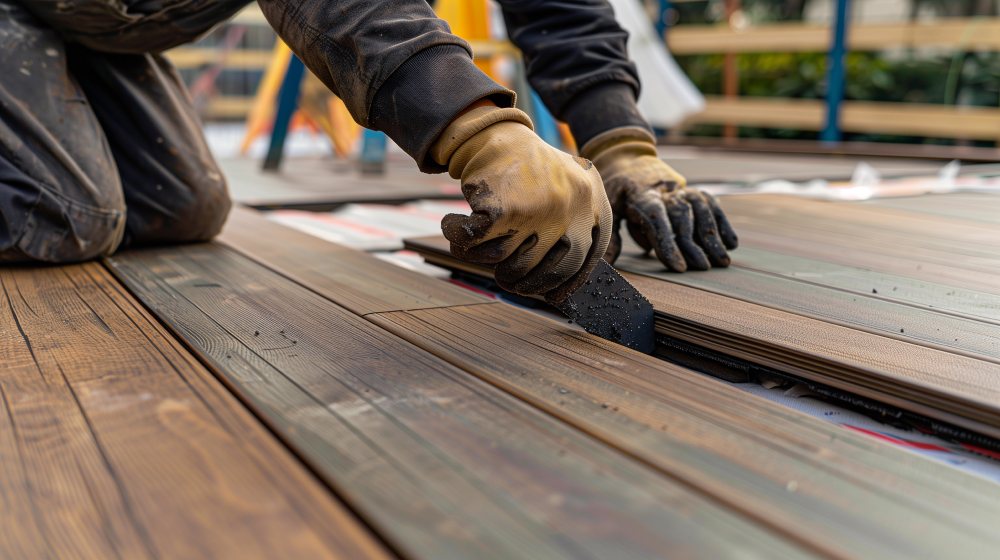A well-constructed deck offers an excellent space for relaxation, entertainment, and outdoor activities. However, ensuring that your deck is safe is paramount to prevent accidents and injuries. Regular maintenance, structural checks, and incorporating safety features can transform your deck into a secure haven for family and guests. This comprehensive guide provides detailed safety tips to help you maintain a secure outdoor space.
1. Regular Inspections
Overview: Regular inspections are crucial to identify and address potential safety hazards before they become serious problems. A thorough inspection should be conducted at least once a year, ideally in spring or fall.Steps:
- Check for Rot and Decay: Inspect all wooden components, especially those in contact with the ground, for signs of rot and decay. Use a screwdriver to probe the wood; if it feels soft or spongy, it may need to be replaced.
- Look for Cracks and Splinters: Examine the decking boards, railings, and stairs for cracks, splinters, and other damage. Sand down any rough areas to prevent injuries.
- Inspect Fasteners: Check all screws, nails, and bolts to ensure they are secure and in good condition. Tighten any loose fasteners and replace any that are corroded or missing.
- Evaluate Structural Integrity: Ensure that all joists, beams, and support posts are in good condition and securely attached. Look for any signs of sagging or shifting.
- Use a Checklist: Create a detailed checklist to ensure you don’t miss any areas during your inspection.
- Hire a Professional: If you’re unsure about the condition of your deck, consider hiring a professional inspector.
2. Maintaining Structural Integrity
Overview: Maintaining the structural integrity of your deck is essential to prevent collapse and ensure it can support the weight of people and furniture. Steps:- Reinforce Connections: Ensure all connections between joists, beams, and support posts are secure. Use metal connectors, such as joist hangers and post brackets, for added strength.
- Replace Damaged Components: Replace any damaged or weakened components immediately to maintain the overall stability of the deck.
- Check for Termite Damage: Regularly inspect for signs of termite damage, such as hollowed-out wood or mud tubes, and take action if necessary.
- Support Posts: Ensure that support posts are properly anchored and free of rot or decay. Replace any compromised posts promptly.
- Load Capacity: Be mindful of the load capacity of your deck, especially if you plan to add heavy items like a hot tub or large furniture.
- Professional Assessment: For elevated decks, consider having a professional assess the load-bearing capacity and overall structural integrity.
3. Ensuring Proper Railing and Stairs
Overview: Railings and stairs are critical safety features that prevent falls and provide support when navigating the deck. Steps:- Secure Railings: Ensure railings are securely attached and can withstand the pressure of someone leaning against them. Railings should be at least 36 inches high, or higher if local building codes require it.
- Check Baluster Spacing: Ensure balusters are spaced no more than 4 inches apart to prevent small children or pets from slipping through.
- Inspect Stairs: Check that all stairs are secure, level, and free of cracks or rot. Ensure stair treads are deep enough and consistent in height to prevent tripping.
- Add Handrails: Install handrails on stairs for added support. Handrails should be smooth and easy to grip.
- Non-Slip Treads: Consider adding non-slip treads or adhesive strips to stairs to prevent slipping.
- Even Spacing: Ensure all steps and railings are evenly spaced and meet local building codes.
Join HICP Homeowner’s Alliance
Connect with experts, get special discounts and enjoy member benefits
4. Preventing Slips and Falls
Overview: Slips and falls are common accidents on decks, especially when surfaces are wet or icy. Taking preventative measures can significantly reduce these risks.Steps:
- Non-Slip Surfaces: Apply non-slip coatings or treatments to the deck surface to improve traction. Alternatively, use non-slip mats in high-traffic areas.
- Keep the Deck Clean: Regularly clean the deck to remove dirt, leaves, and debris that can make the surface slippery.
- Manage Moisture: Ensure proper drainage to prevent water from pooling on the deck. Keep gutters and downspouts clear to direct water away from the deck.
- Winter Preparation: In colder climates, remove snow and ice promptly using a plastic shovel to avoid damaging the deck. Use sand or kitty litter for traction instead of salt, which can harm the wood.
- Regular Maintenance: Regularly reapply non-slip treatments as needed to maintain effectiveness.
- Moss and Algae: Remove moss and algae promptly, as they can create very slippery surfaces.
5. Fire Safety
Overview: Decks can pose a fire hazard, especially if you use a grill or fire pit. Implementing fire safety measures can prevent accidents and damage.Steps:
- Maintain a Safe Distance: Keep grills, fire pits, and other heat sources at least 10 feet away from the house and any flammable materials.
- Use Fire-Resistant Materials: Consider using fire-resistant materials for decking, such as composite materials or treated wood.
- Install a Fire Extinguisher: Keep a fire extinguisher nearby and ensure it is easily accessible in case of an emergency.
- Clear Debris: Regularly clear leaves, twigs, and other debris from the deck and surrounding areas to reduce fire risk.
- Monitor Fires: Never leave a grill or fire pit unattended, and always ensure they are fully extinguished after use.
- Spark Guards: Use spark guards on fire pits to contain sparks and embers.
6. Electrical Safety
Overview: If your deck includes electrical features such as lighting or outlets, proper installation and maintenance are crucial for safety.Steps:
- Use Outdoor-Rated Fixtures: Ensure all electrical fixtures and outlets are rated for outdoor use and are weatherproof.
- GFCI Outlets: Install Ground Fault Circuit Interrupter (GFCI) outlets to protect against electrical shocks.
- Regular Inspections: Regularly inspect electrical components for signs of wear or damage. Replace any faulty parts promptly.
- Proper Wiring: Ensure all wiring is properly installed and insulated to prevent electrical hazards.
- Professional Installation: Consider hiring a licensed electrician for installation and maintenance of outdoor electrical systems.
- Cover Outlets: Use outlet covers to protect against moisture and debris.
7. Childproofing and Pet Safety
Overview: Ensuring the deck is safe for children and pets involves additional considerations to prevent accidents and injuries.Steps:
- Secure Gates: Install gates at deck entrances and stairs to prevent children and pets from wandering off or falling down stairs.
- Childproof Locks: Use childproof locks on gates and any storage areas containing hazardous materials.
- Safe Railings: Ensure railings are high enough and balusters are spaced closely enough to prevent children and pets from squeezing through.
- Remove Hazards: Keep hazardous items such as tools, chemicals, and sharp objects out of reach of children and pets.
- Supervision: Always supervise young children and pets when they are on the deck.
- Soft Surfaces: Consider adding soft surfaces or outdoor rugs to prevent injuries from falls.
8. Regular Maintenance
Overview: Regular maintenance is key to keeping your deck safe and functional. Addressing wear and tear promptly can prevent more serious issues from developing.Steps:
- Clean the Deck: Regularly clean the deck to remove dirt, debris, and mildew. Use a mild detergent and a soft-bristle brush to avoid damaging the surface.
- Seal and Stain: Apply sealant or stain to protect the wood from moisture and UV damage. Follow the manufacturer’s instructions for reapplication intervals.
- Repair Damage: Promptly repair any damage such as cracks, splinters, or loose boards. Replace any rotten or compromised components.
- Winter Preparation: Prepare your deck for winter by applying a water-repellent sealant and ensuring proper drainage to prevent ice buildup.
- Scheduled Maintenance: Create a maintenance schedule to ensure all tasks are completed regularly.
- Professional Help: Consider hiring a professional for tasks such as sealing and structural repairs to ensure quality work.








